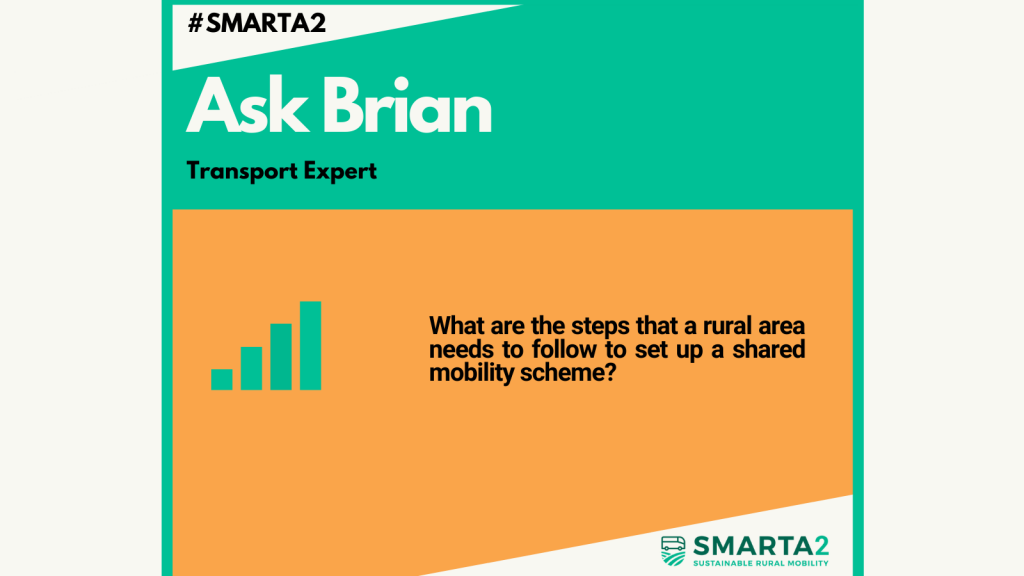
Ask Brian: What Are The Steps That a Rural Area Needs to Follow to Set Up a Shared Mobility Scheme?

Engagement with the local community is the first issue to address to understand the full range of issues that are impacting on stakeholders. In the past, churches were the glue that bonded rural communities.  The church was the focal point where everybody would meet once a week and people would talk about the things that were going on in the community. In today’s environment, less people go to church. Social media is now the “glue†that keeps communities informed. In theory we are better connected than ever using technology. We are connected to the whole world, yet do we understand what is going on in our communities? Technologies have a part to play in the future of rural areas but only if we have structures in place to support communities to be involved in the design of services. Everyone needs to feel involved including those with no access to technologies. Data and understanding what it means is critical to success. This approach was adopted across all SMARTA2 sites.
Social media, crowdsourcing and co-creation techniques used in local workshops can be an effective way to bring people from the local community together, discuss their needs, and discover solutions that benefit the whole community. After all, they are the people who are going to use the services.
Bringing the local community together can help break down barriers and develop trust amongst people. Trust is key to shared mobility. In rural areas typically there is no shortage of cars. Quite the contrary. Some rural areas have over 80% car ownership. Most often, it is the lack of trust that makes people reluctant to share a ride. Therefore, bringing people together to identify solutions to their problems, can help bridge the trust-gap and encourage sharing. It is important that all stakeholders including existing operators are involved in discussions from an early stage. Evolution requires every stakeholder to understand the full range of issues being considered and why actions are being adopted. We need to maximise the use of existing resources to provide an integrated multi modal network. This can create a win, win situation for everyone.
These tasks will feel daunting for communities. However, there are numerous organisations that can help. EU Leader programme offices, local authorities are all willing to help. Also, contact nearby universities and colleges that have the skills and the capacity to assist. They are often looking for exciting projects for their students. In addition, rural areas can draw from numerous examples of good practices that have been developed in European rural areas over the past 20-25 years. In this context, they will find particularly useful to look at the good practices and shared mobility solutions we have at the SMARTA and SMARTA2 projects from sites across Europe.
Finally, whilst not every mobility solution needs to be expensive, rural communities can look at opportunities offered by the European Union that can support them to finance and materialise their ideas. For example, they can refer to the LEADER and LEADER+ programme. No rural area has to be alone. We can all be part of the solution and working together is the best way forward.
Want to discover good practices in rural mobility and keep up to date with the latest developments on rural mobility? Visit our website, or follow us on Twitter and LinkedIn.